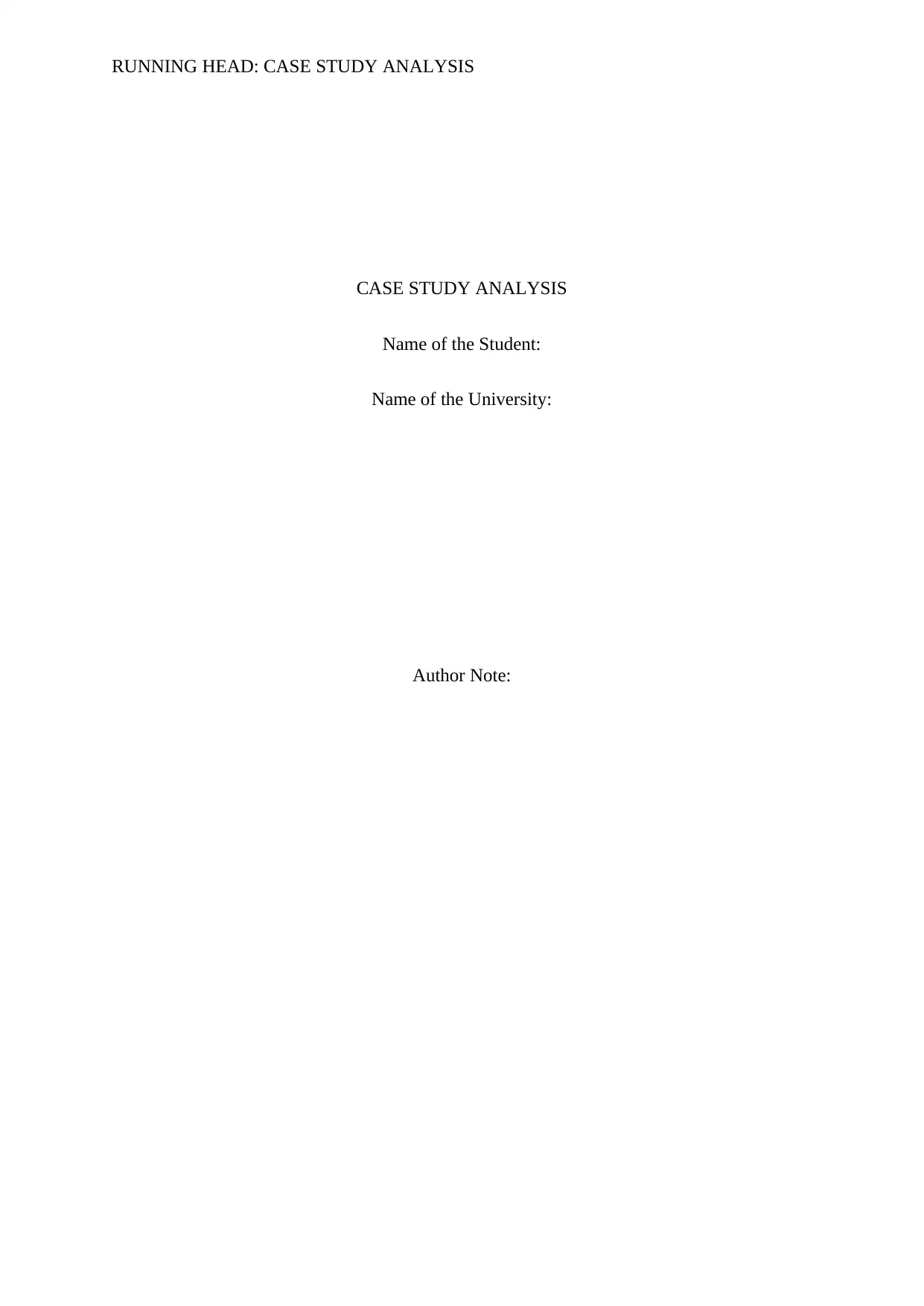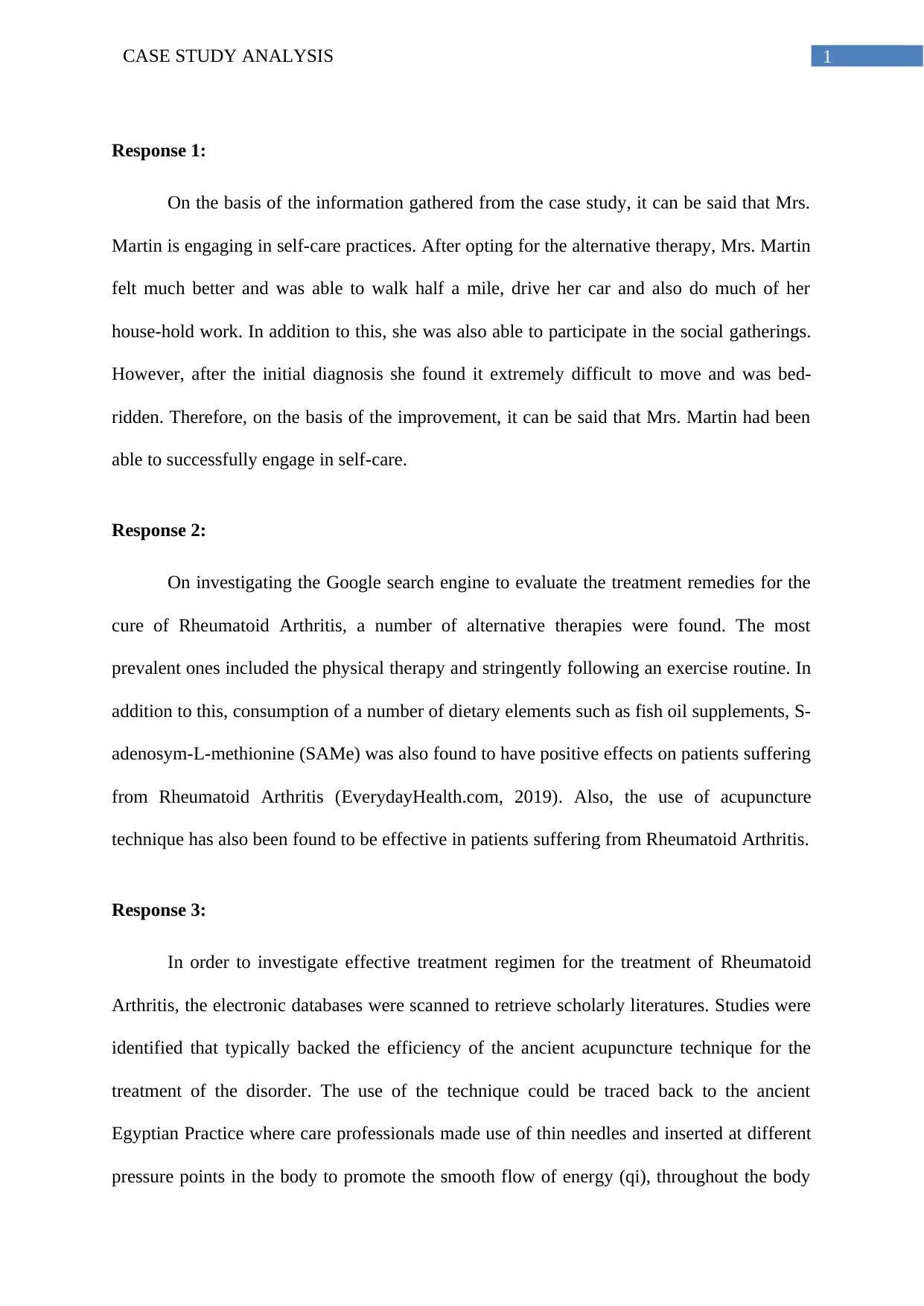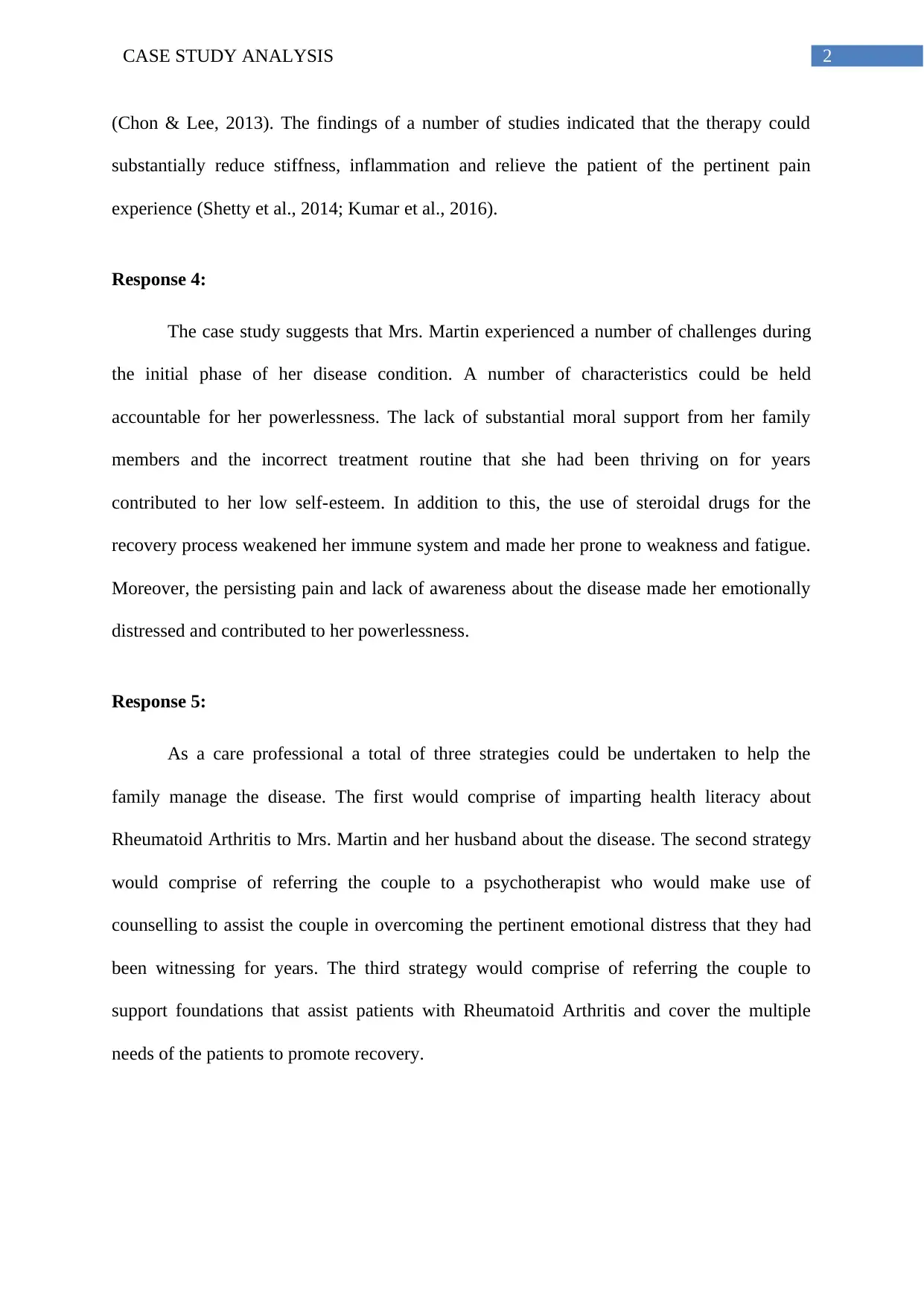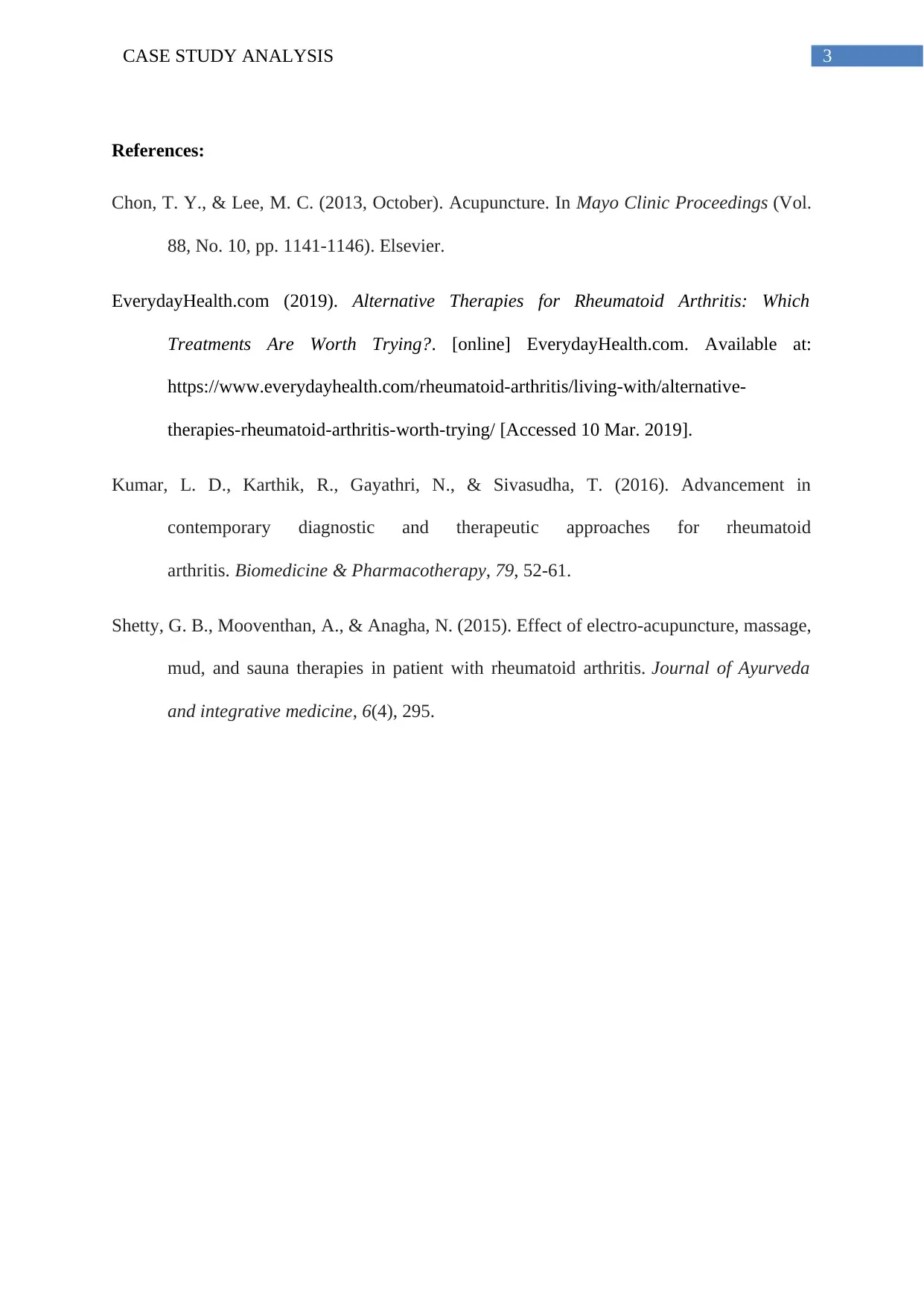Case Study Analysis: Exploring Treatment for Rheumatoid Arthritis
VerifiedAdded on 2023/04/24
|4
|788
|394
Case Study
AI Summary
This case study analyzes the case of Mrs. Martin, a patient with Rheumatoid Arthritis, exploring her journey with the disease and the effectiveness of various treatment approaches. The analysis delves into Mrs. Martin's engagement in self-care practices, the use of alternative therapies such as acupuncture and physical therapy, and the challenges she faced due to the disease. The study also examines the use of electronic databases to identify effective treatment regimens and scholarly literature supporting the benefits of acupuncture. Furthermore, it explores the challenges Mrs. Martin encountered, including lack of family support and the impact of steroidal drugs on her immune system. Finally, the study proposes strategies for healthcare professionals to assist the family in managing the disease, including health literacy, counseling, and referral to support foundations. References from various sources are included to support the analysis.
1 out of 4










![[object Object]](/_next/static/media/star-bottom.7253800d.svg)